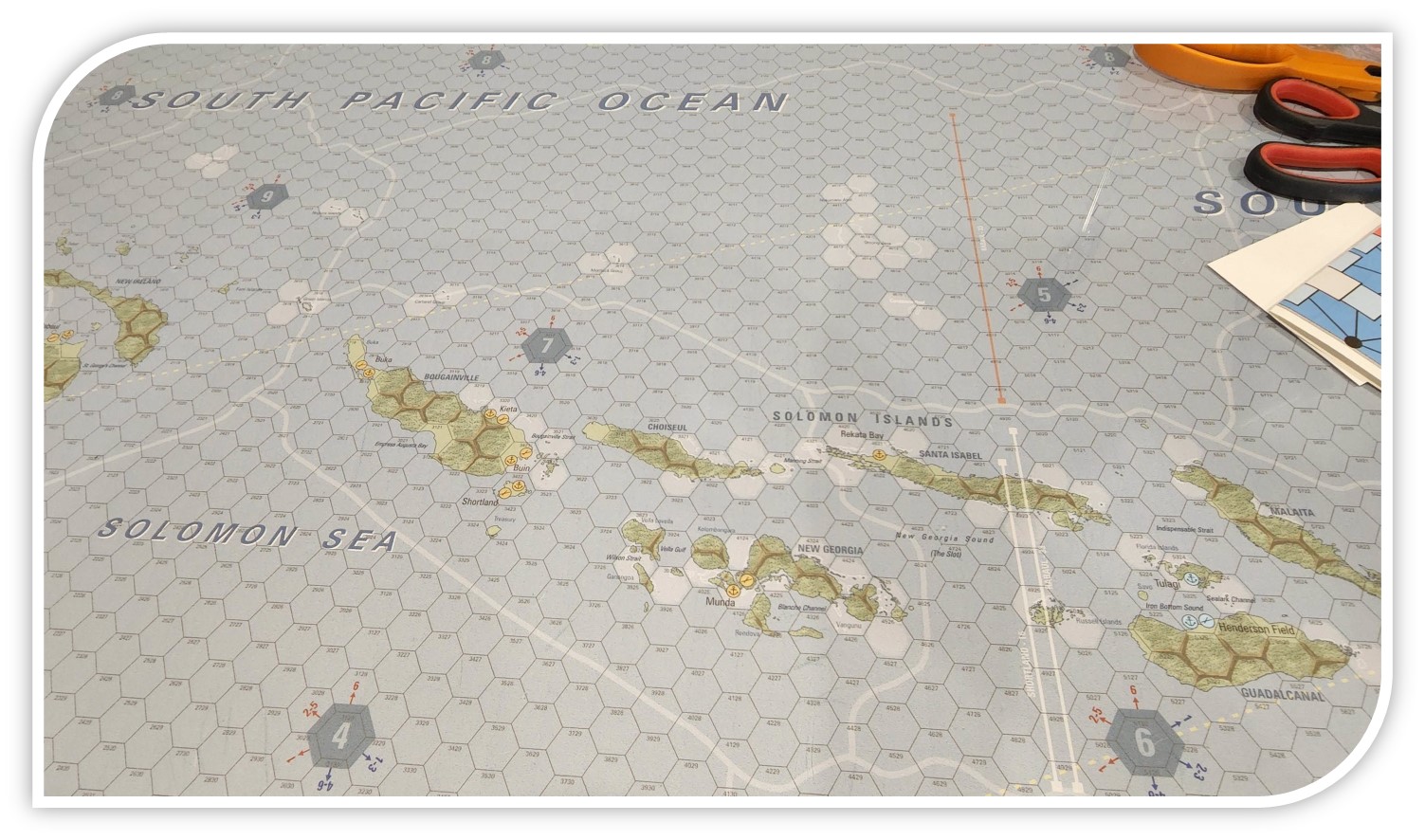
Last weekend [now two weekends ago] I sat down with William [Bill Cooper] to discuss his new, shall we say ambitious, glorious, detailed, reimagining of the Pacific Theatre called Beneath the Southern Cross.
Bills first wargame was, yep you guessed it Midway. Then of course Flattop, and he became hooked on the period surrounding the Guadalcanal campaign immediately before and after. Esperanz, Santa Cruz, Coral sea and the landing and fighting on and around Guadalcanal. After spending a lot of time generating scenarios using Flat Top Bill decided he wanted to build his own, nor detailed game. Down the rabbit hole he went.
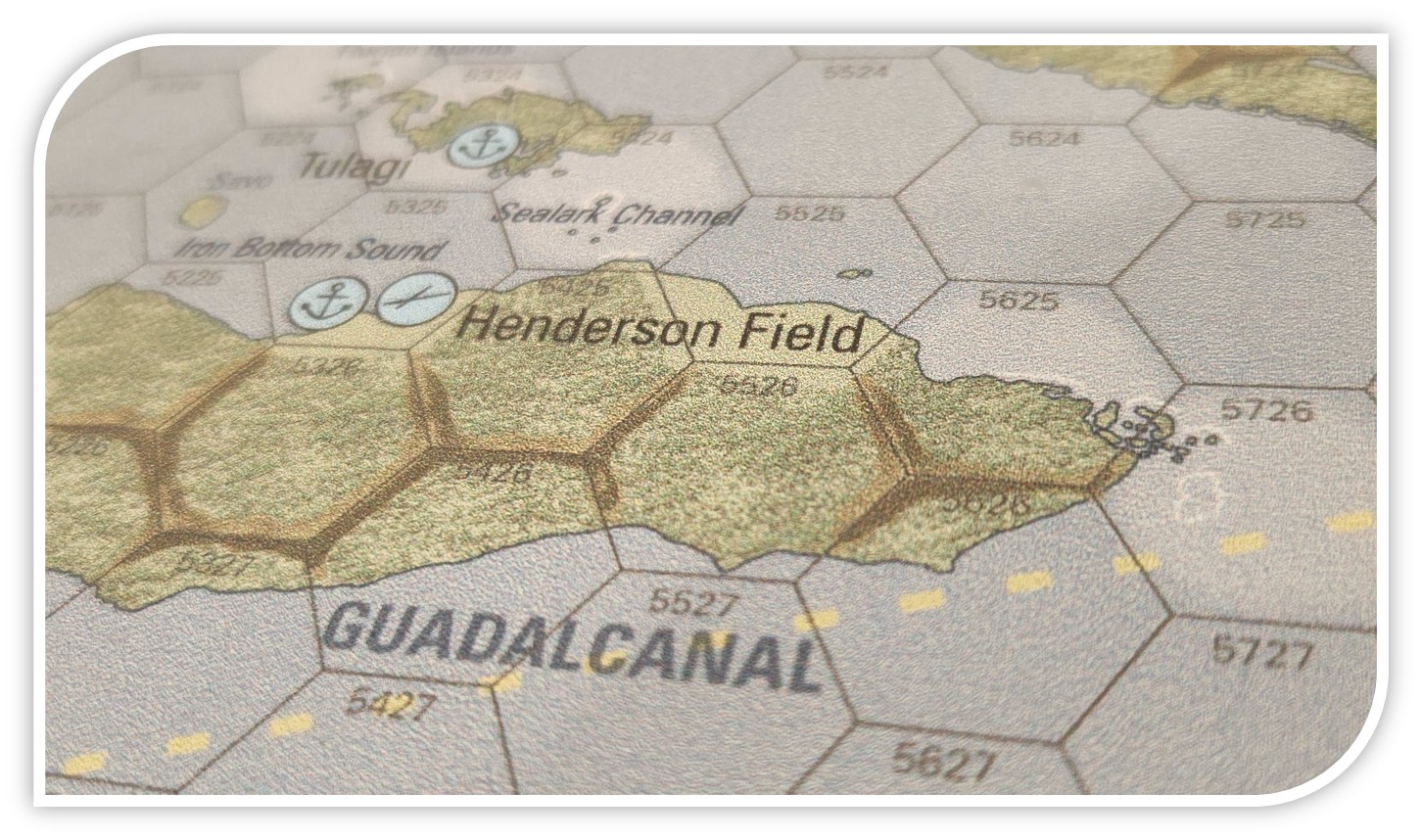
Exacting map details for the coastline. That yellow line there is the International Date line.
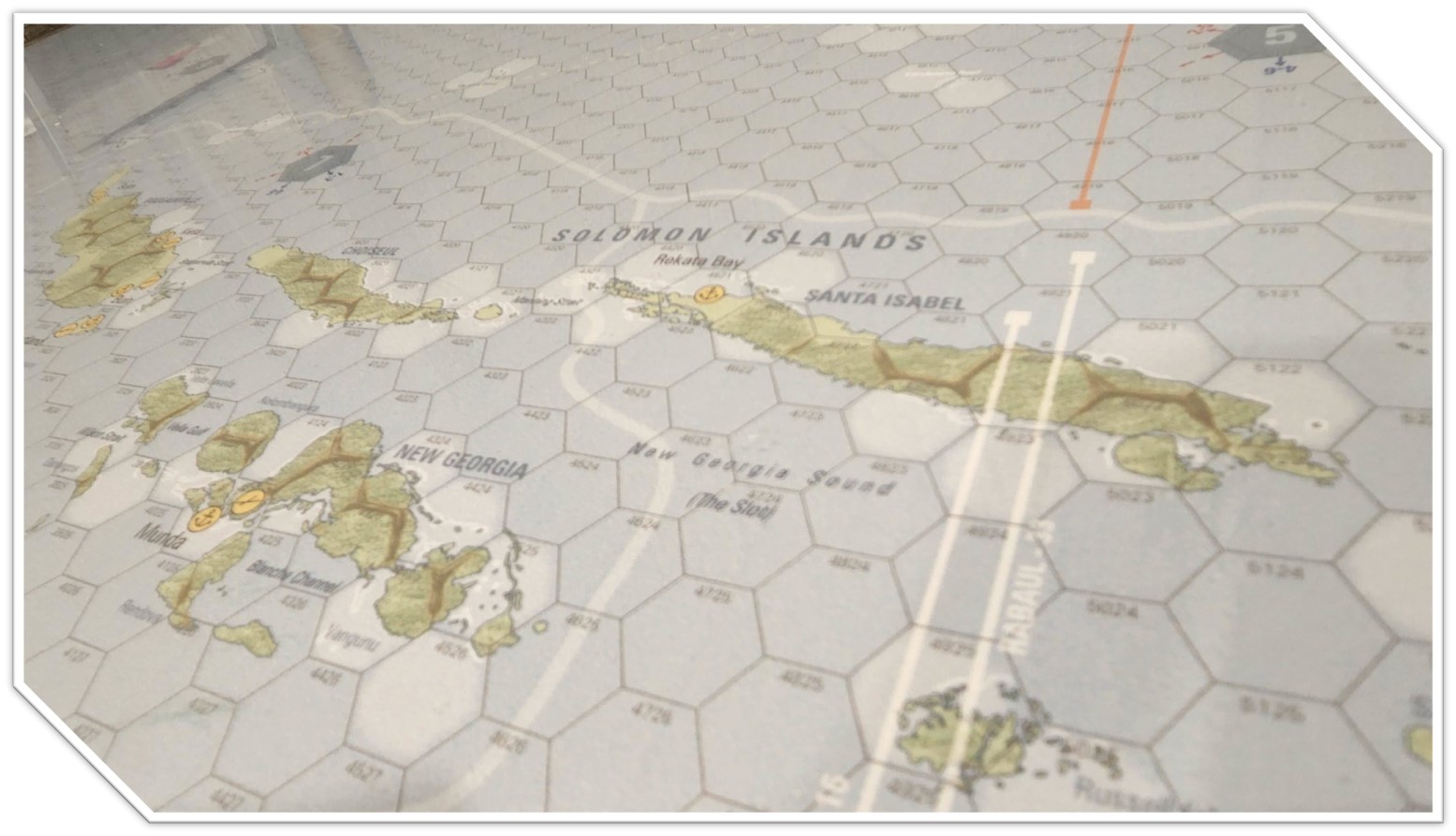
These maps were taken from a 1980 Royal Australian Navy survey. Specifically from their Operational Navy Chart series online.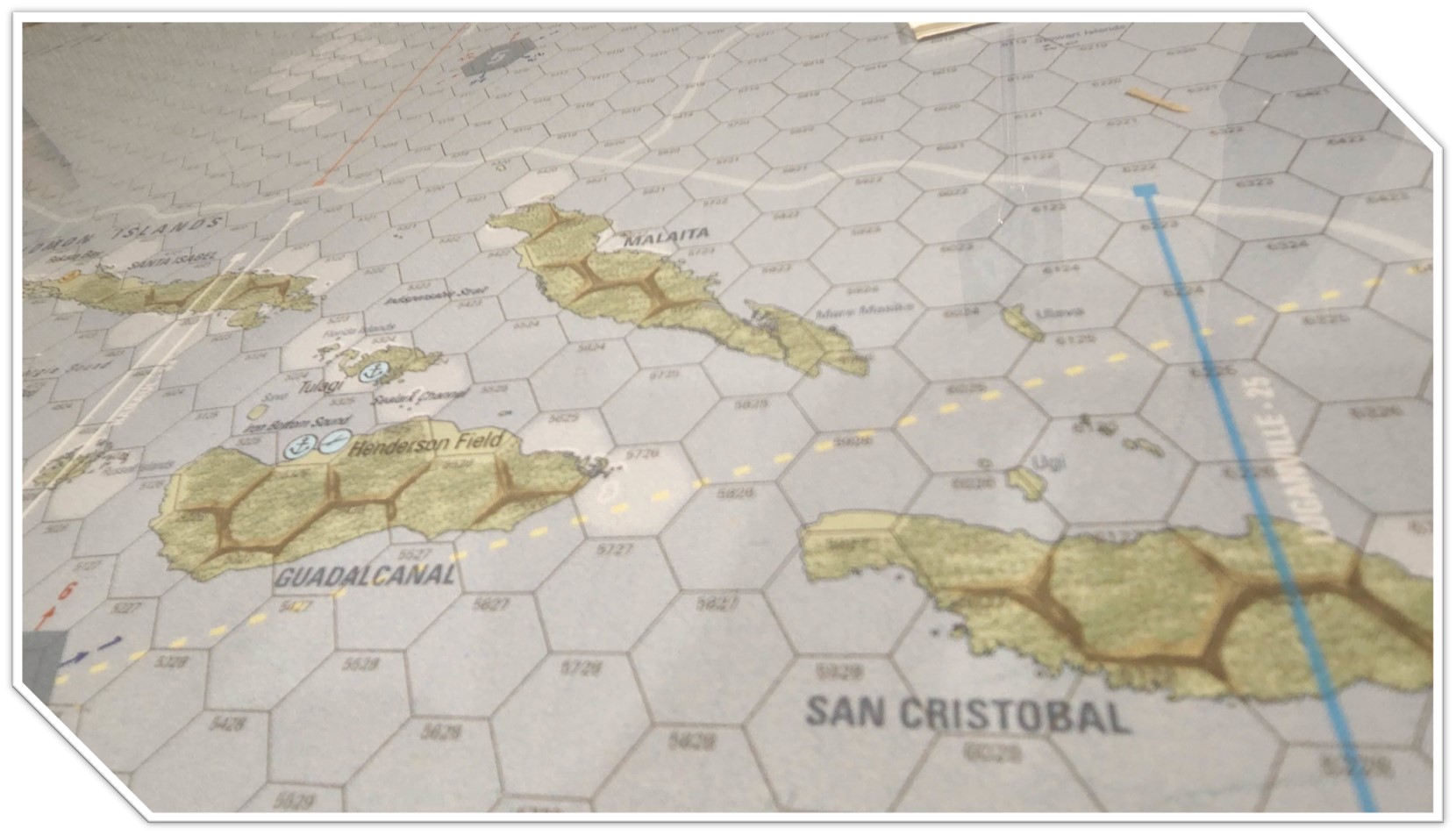
I suspect that one of the reasons why so many of us are fascinated with the period and the specific engagements is to my mind and prompted by Bill the fact that the invention of a ‘new way of warfare’ was evolving. There was certainly a lot of Lets send a bunch of planes and see what happens.
Tactics, strategy, technology, doctrine were all evolving daily. Even things like AA had one type of impact during this period and was much less effective than later in the conflict.
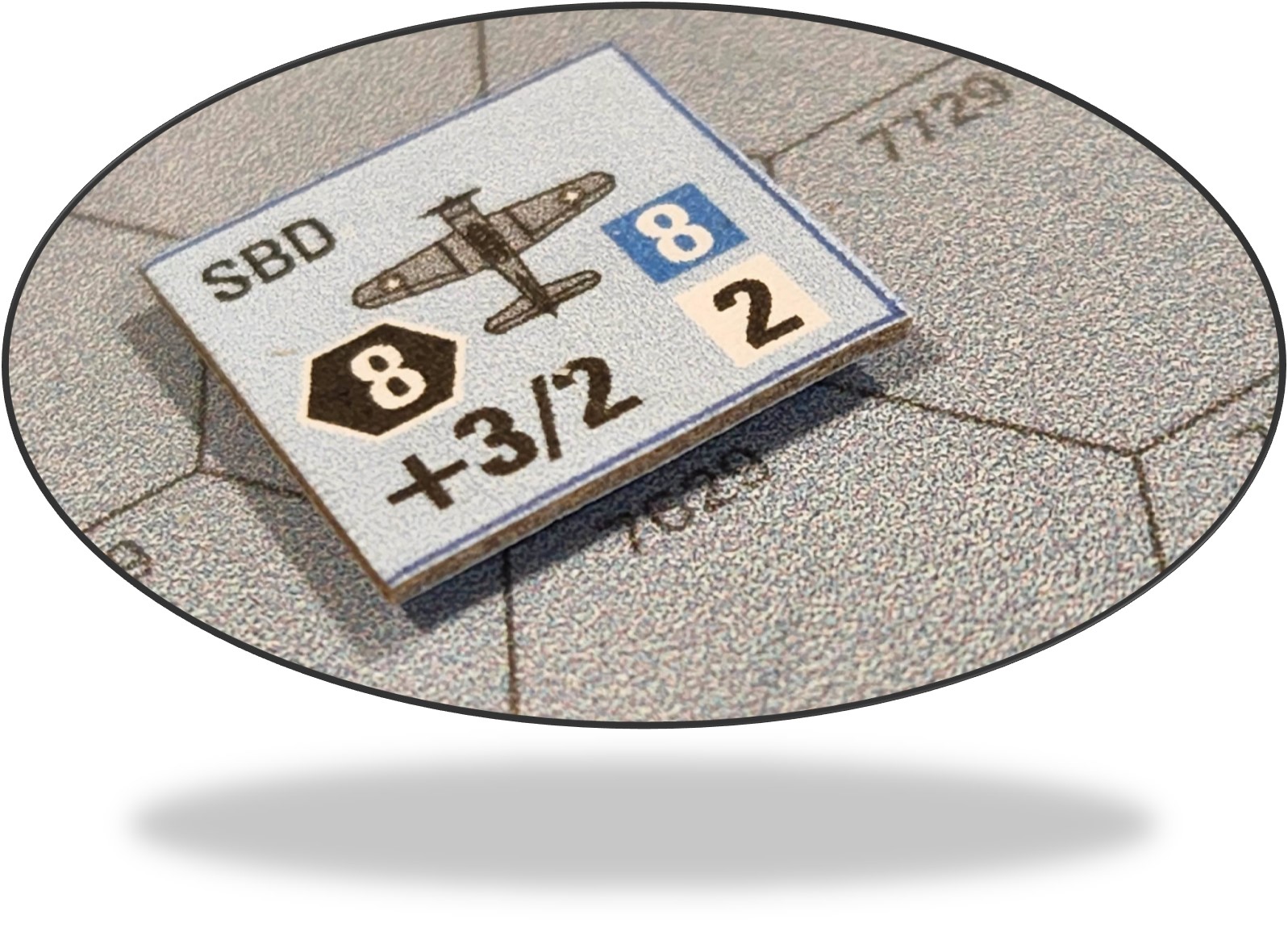
A typical air counter has number in a black hex, this is the movement per hour. The blue boxed number is the number of hours in the air it can spend. The bottom left numbers represent the speed and speed boost available. The yellow boxed number is any extra endurance available [think drop tanks etc]
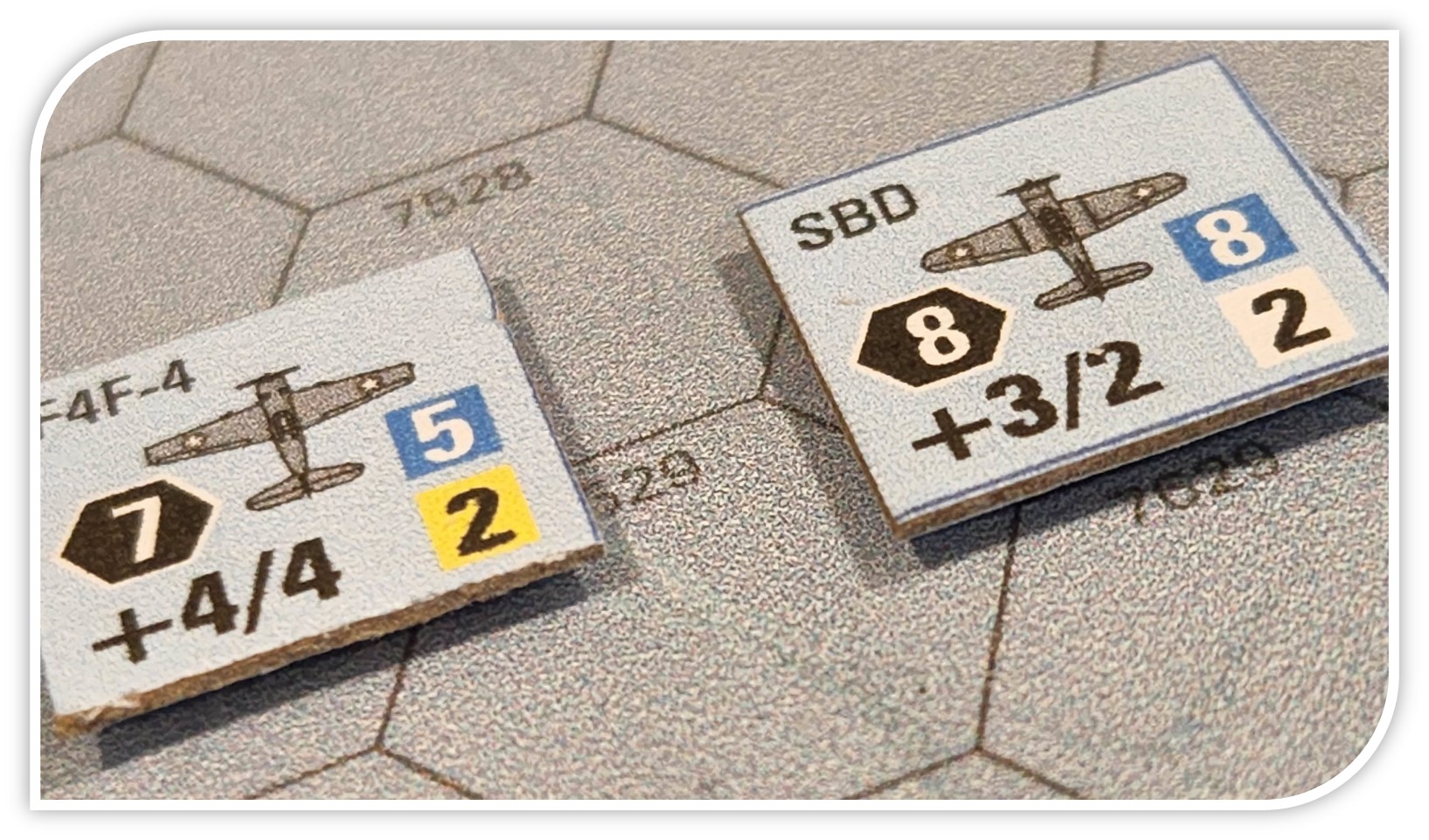
So the fronts are entirely movement oriented.
The backs deal with combat. They are simple DRMs that are applied to weapon type and combat type.
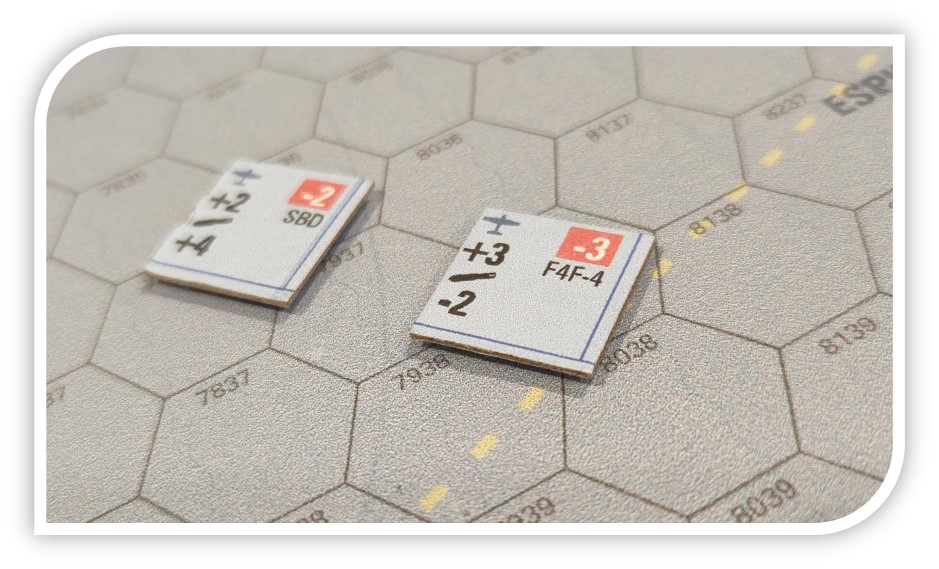
Here is where the shizzle gets real. Once a strike goes in against naval forces, the enemy lays out their ships. The black dots represent AA from a ship that can support another ship. Of course this means placement and direction of attacker matter. It allows the DD’s and escort ships to ‘cover’ the CV. Even to their own detriment. Cool concept. Especially given as I mentioned earlier AA was a nuisance thing versus a game changer like latter in the war.
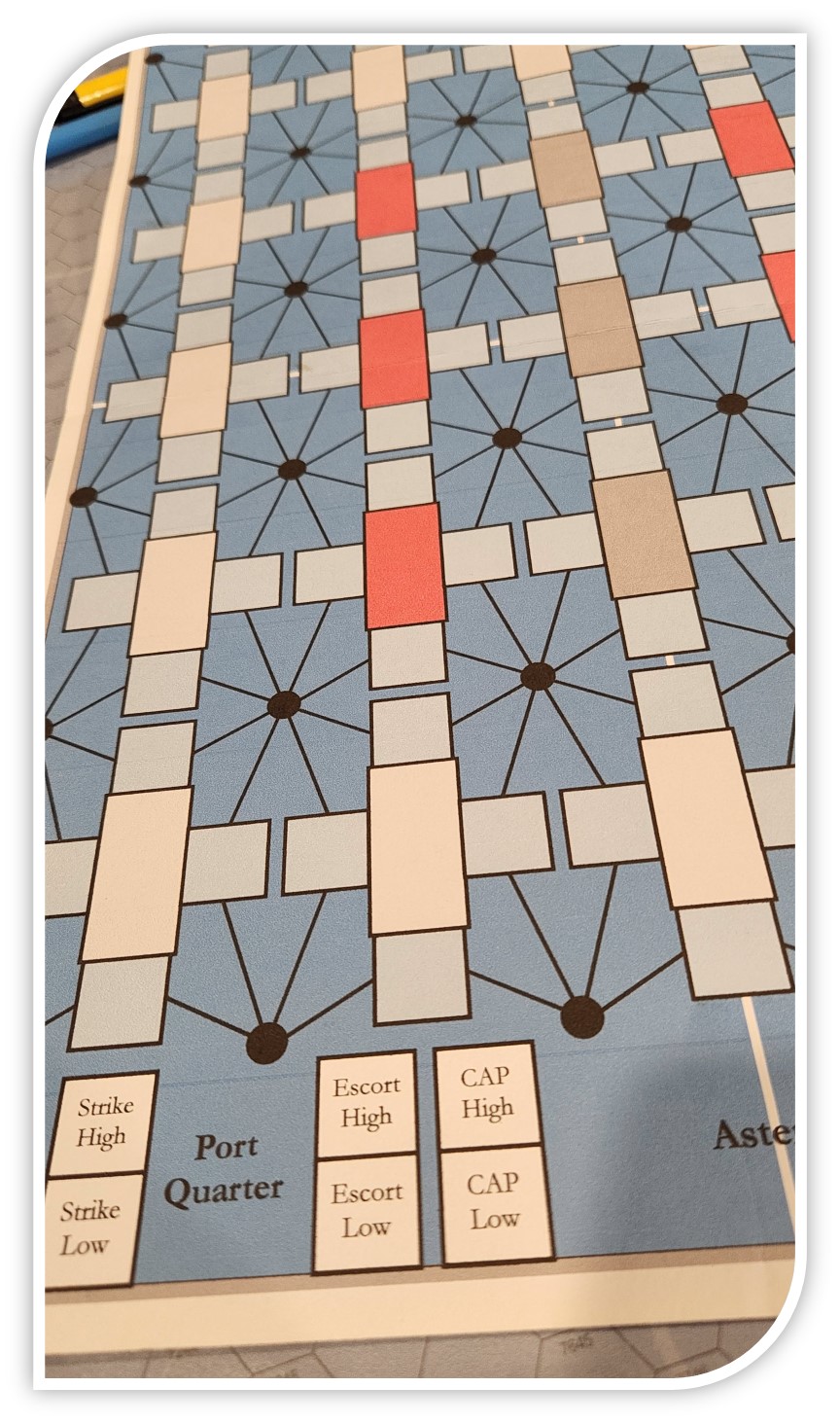
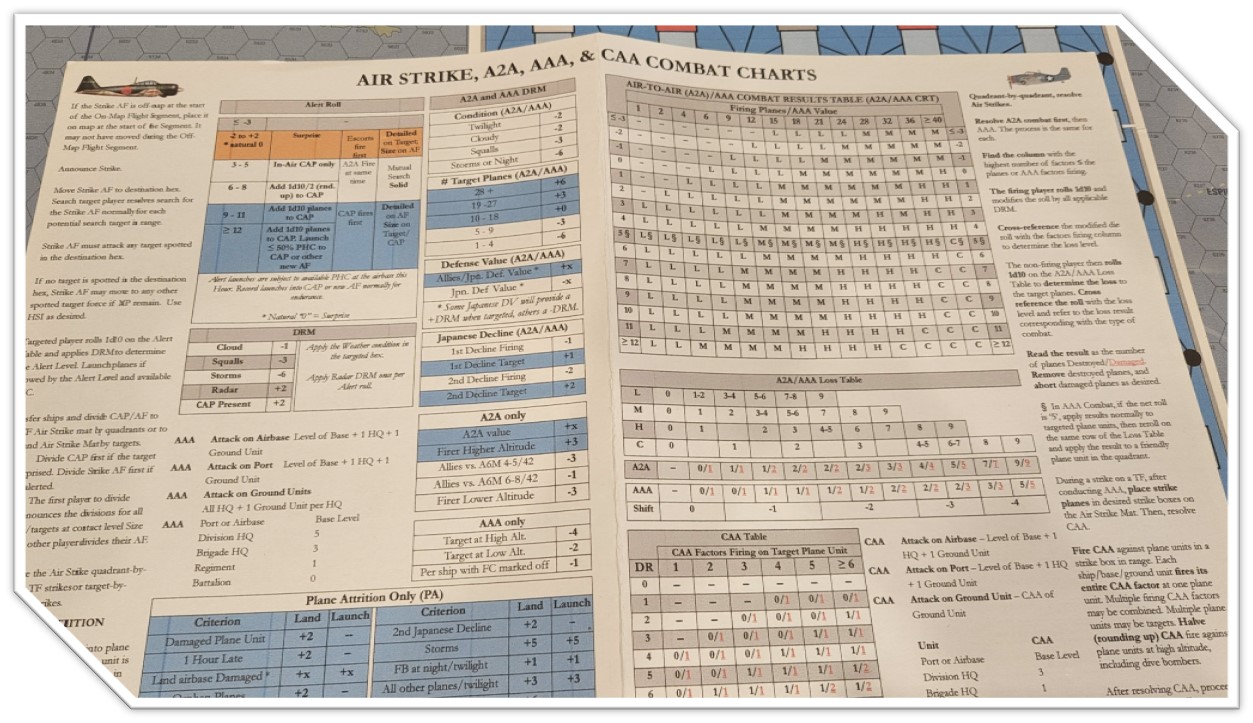
For scaling purposes each counter is indeed a plane. Each hex 16.8 nautical miles, and the game runs in a 24 hour cycle, with a Naval cycle inserted also.
We did not dig into representative combat resolution, which will be saved for some AAR’s when the title is closer to publishing. When learning each combat according to Bill was taking 5 or so minutes with a much shorter resolution once everyone knows what is going on. The neat thing here is that only the DEFENDER knows the actual result. Just as with search the seeker only knows what is shared with him [similar to Flatop/CV].
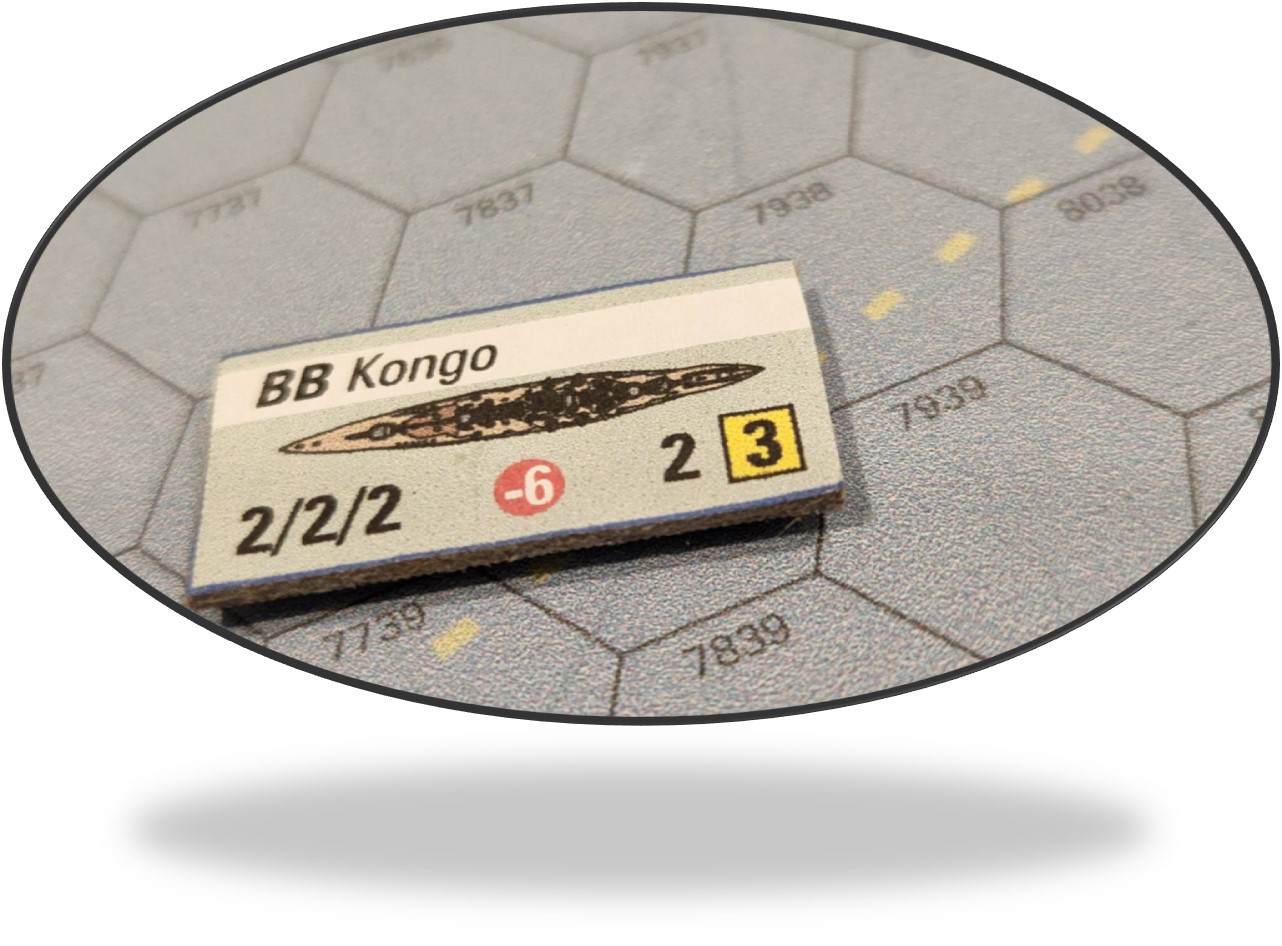
Here the Kongo has three similar speed factors, others wil vary. The six in a red circle is a combat modifier. The raw 2 is the AA factor while the yellow box factor is for close AA.
The back of ship counters have logistical info. Number of naval cycles and the activation cost. Yep in the campaign logistics will matter. Each Port or Airfield will have to decide who gets to fly/sail, and face the hard choices that the boys from Cactus airforce did when Av Gas was so low they had enough gas for one aircraft to fly for 8 hours left on hand!
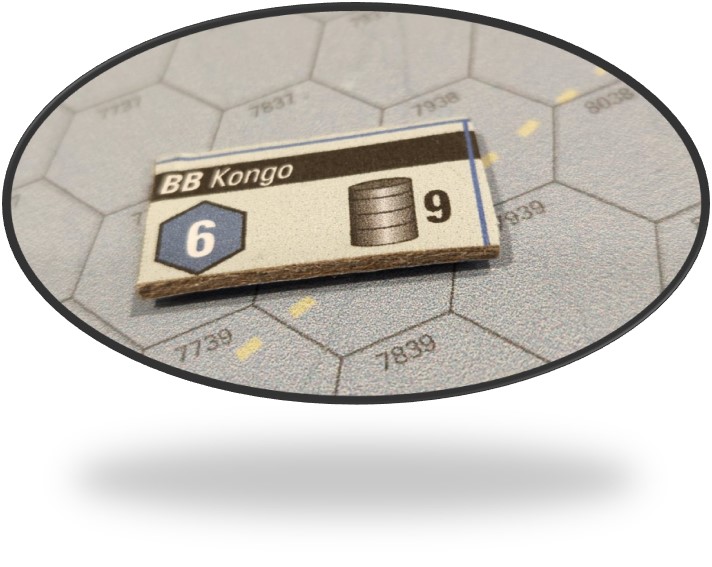
Search is a function of aircraft, weather, etc. More on Search process later. But as you can see on the right below some details are going to be sketchy!
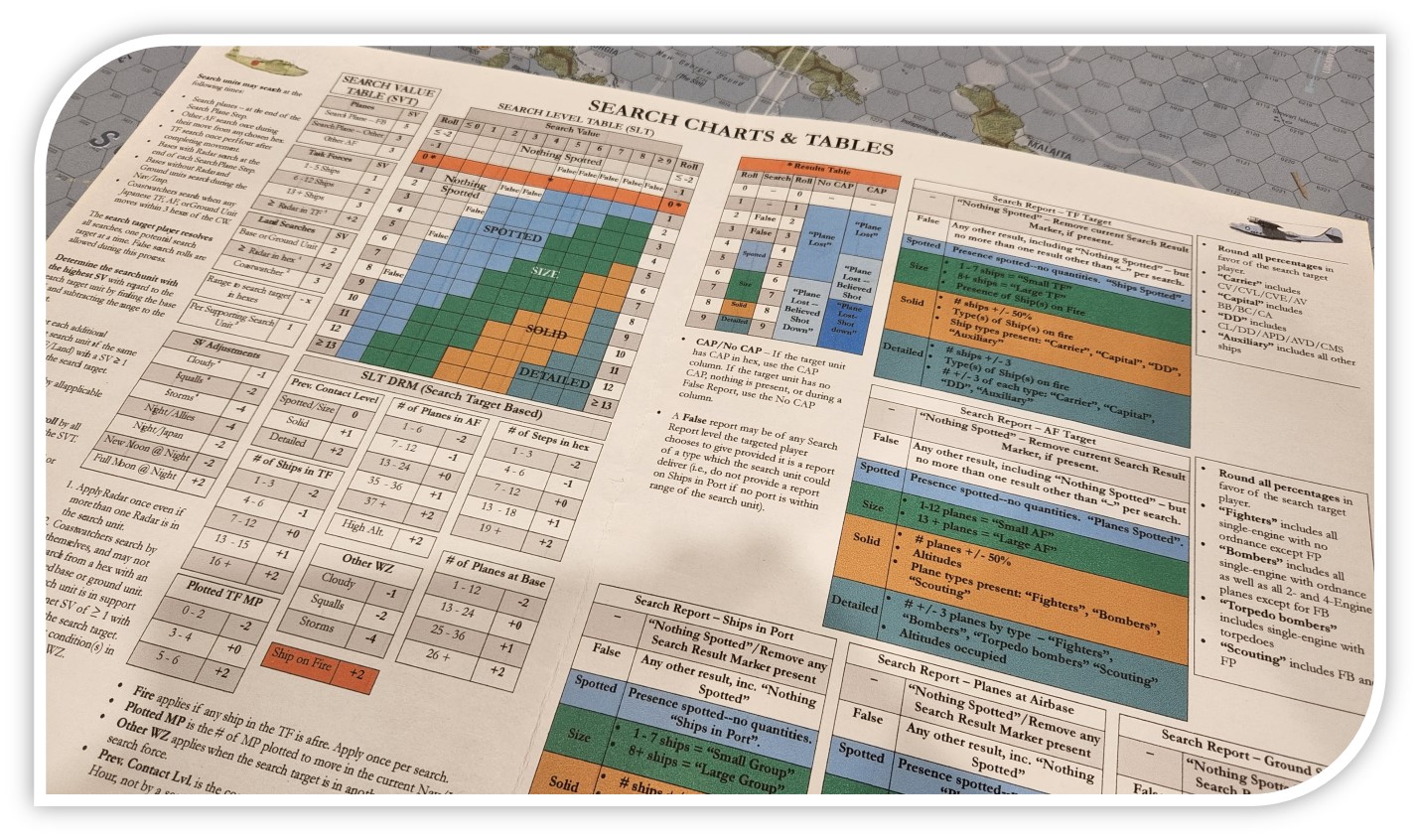
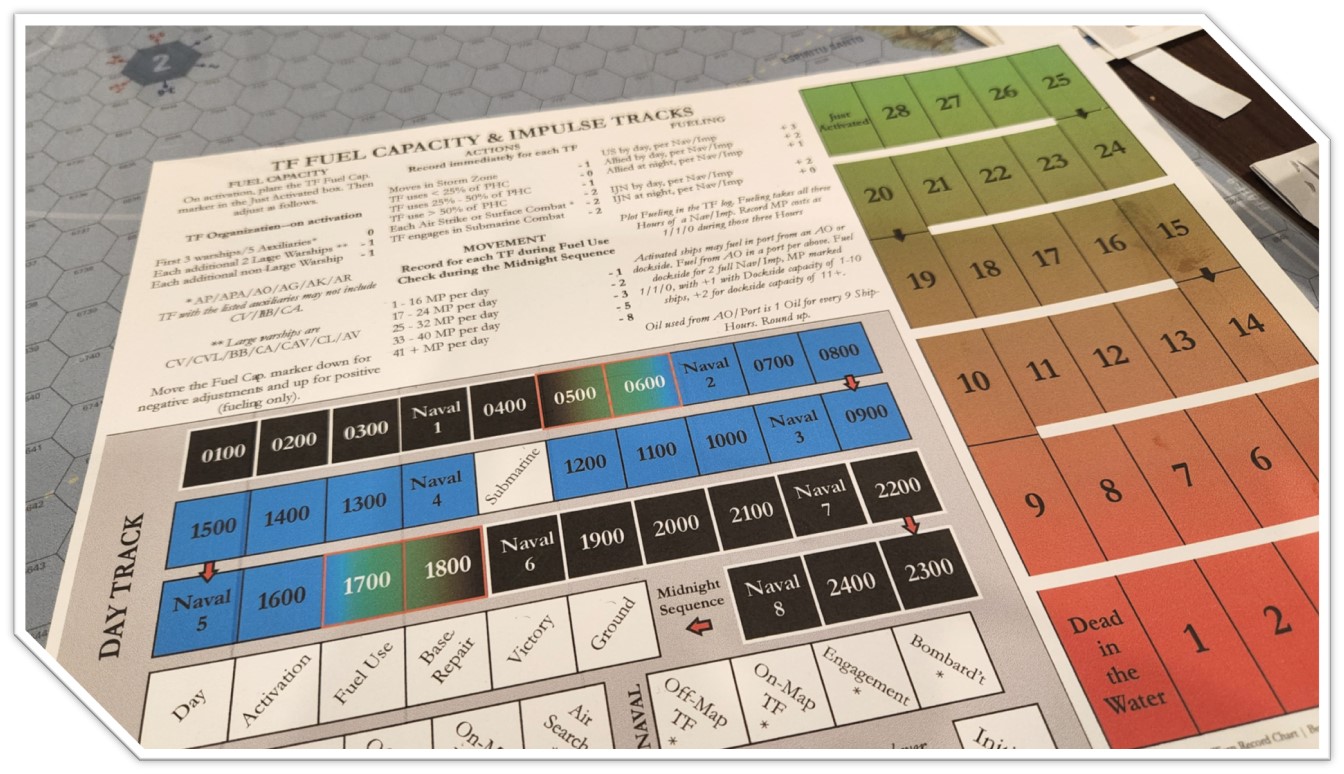
Turn record chart.
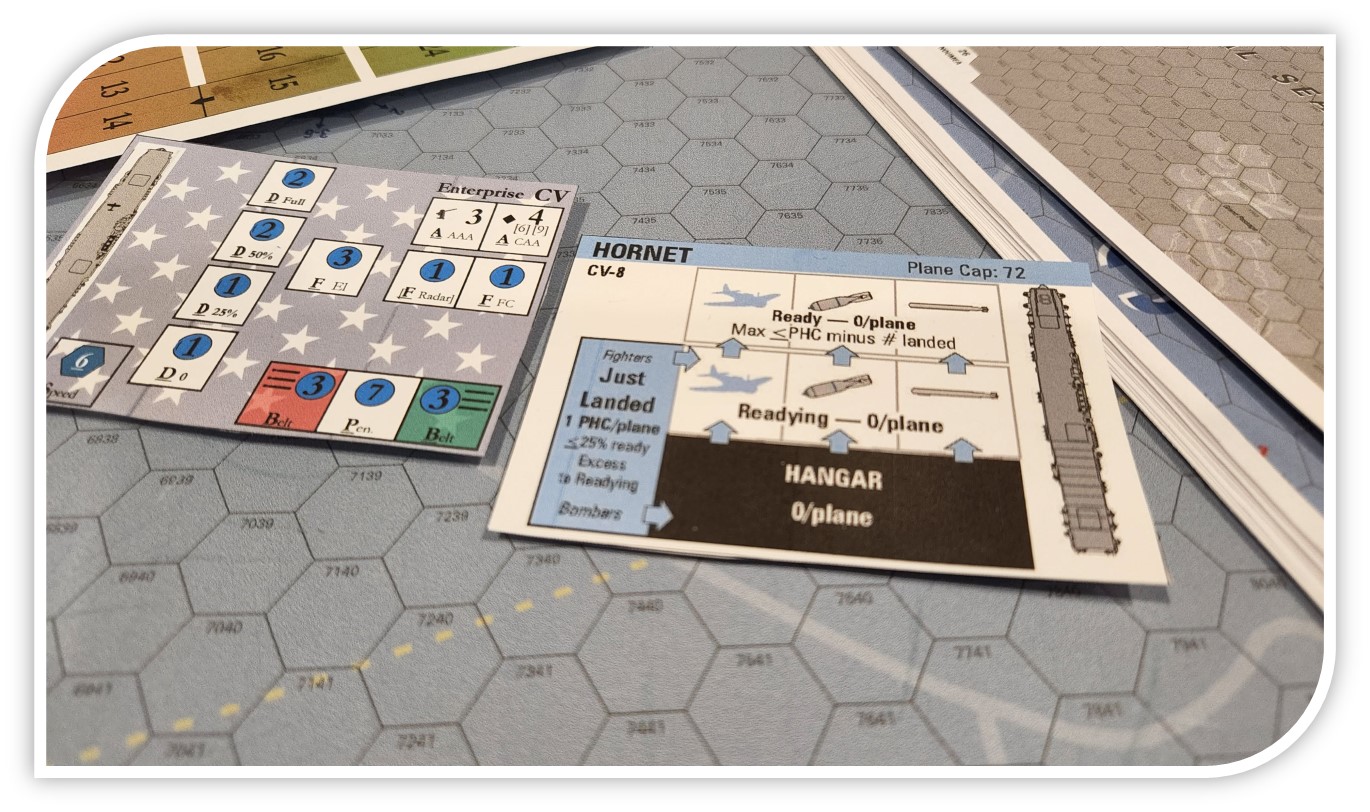
How bases are managed, off map above.
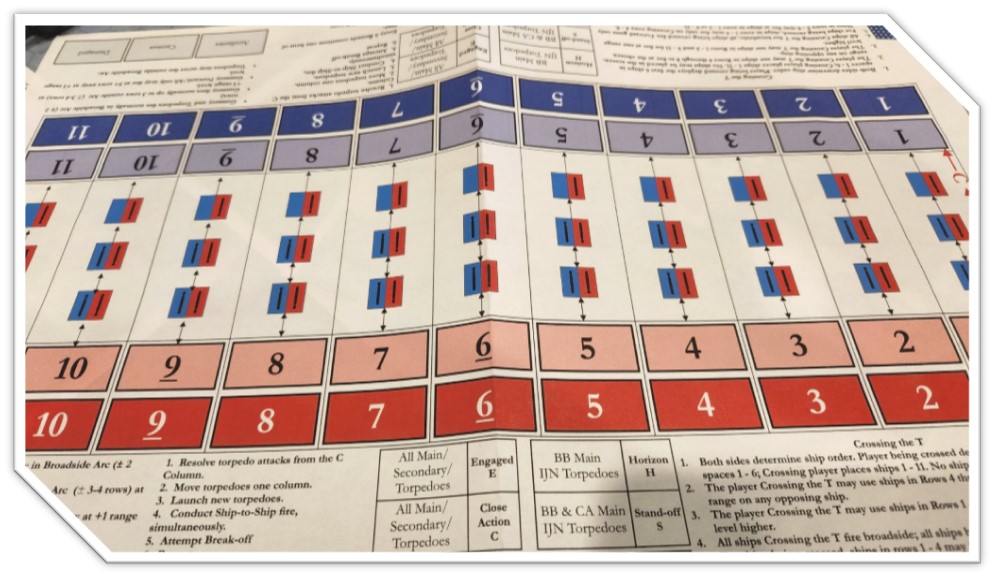
Naval combat is resolved in a typical fashion, on a battle board old school style!
My one concern here is going to be playability, and time to play. With a very much detailed, robust and hopefully historically accurate game play will it still be interesting, fun and engaging? Sometimes kitchen sink design process, offer TOO much. Which while awesome in detail, sacrifice playability and ultimately sales. Over the next coming months I hope to explore with Bill more about the design, search, movement, combat, logistics and ultimately tactics!
Stay tuned, sound off below if you are interested in this titles and where it is headed. Love to hear your thoughts.
Bill and I interacted many years ago in PBM FlatTop. I had a minor roll in the game, but could see his brilliance and knowledge of the subject matter. I have been following this project on CSW for quite a while. More of a lurker than a contributor as my knowledge on the subject matter is limited. I do look forward to this game and will be on the day one preorder when it goes up.
Great to know!
Wasn’t aware of this one, thanks for posting. Looks fascinating. Love to study detailed titles like this.
Love the game concept and will definitely be picking it up. Umpired double-blind “Flat Top” was absolute gaming dope back in the 80’s, even as a spectator.
I do wish it had a different title, as I initially confused it with GMT’s forthcoming Flying Colors Vol. IV “Under the Southern Cross” game. (At least until I saw the SBD counter!
Looks interesting for sure
This got played at CSW Expo Dallas, though I don’t know how far they got. There was at least a few carrier strikes on each side.
Yes, that is where I met William and we discussed the game.
Thanks for the kind words!
I wanted to note something based on a FB comment — although each plane factor is 1 plane, this is not a plane to plane 1:1 aerial combat game. Planes fly in plane units — of the of the counters you see above plus a number marker, and they all fight together.
So if you send 12 SBD to attack Zuikaku, for example, they roll on the 12 column. Or if 15 F4F fire at 12 A6M, they roll on the 15 column as a group.
Might still not be someone’s cup of tea — but nothing is to everyone’s taste except perhaps blue sky.
Maybe.